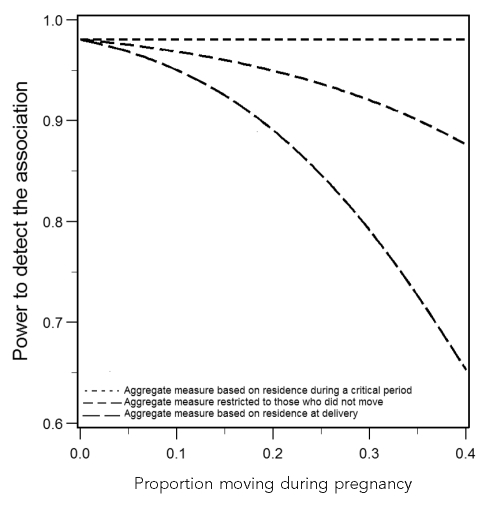Figure.
Effect of residential mobility on the power of environmental studies
aThe number of geographic areas is 27, with the prevalence of a binary exposure ranging from 0.26 to 0.74, and a sample size of 25,000 in each area. It is assumed that the occurrence of the outcome is 85 per 1,000 for exposed individuals and 75 per 1,000 for unexposed individuals—values that are consistent with the frequency of low birthweight in the population and with the small magnitude of effect that is typical in environmental studies. Mobility is assumed to be random with respect to individual-level and area-wide measures of exposure.

